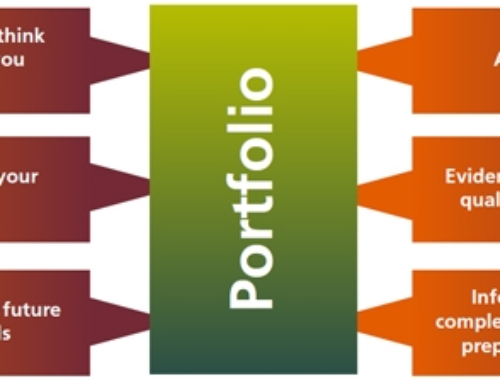Definition of Motivational Design
Motivational design refers to the process of arranging resources and procedures to bring about changes in motivation. Motivational design can be applied to improving students’ motivation to learn, employees’ motivation to work, the development of specific motivational characteristics in individuals, and to improving peoples’ skills in self-motivation. Motivational design is systematic and aims for replicable principles and processes. In that regard, motivational design is based on the scientific literature on human motivation and stands in contrast to “charismatic” motivational speakers and workshops whose aims are largely in the area of emotional arousal and are grounded in a blending of personal experiences, psychological principles, and intuition. Certainly, the successes of motivational speakers or anyone else who attempts to influence the motivation of another can be explained or investigated, even if on a post hoc basis, in terms of motivational constructs. The difference is that motivational design seeks explanation and predictability while charismatic approaches tend to be grounded more in the unique talents of individuals who have achieved success (or purport to have).
The primary focus of this introduction to motivational design is on the motivation to learn and refers specifically to strategies, principles, and processes for making instruction appealing. This adds another dimension to the traditional view of instructional design as being the process and technique of producing efficient and effective instruction. Efficiency refers to economy in the use of instructional time, materials, and other resources. It is not generally viewed as relating to the motivational aspects of instruction except in a negative way. If an instructional event makes inefficient use of time and resources it can be boring or irritating to the audience. But, efficiency of delivery does not add to students’ intrinsic interest in the situation.
Effectiveness, however, is sometimes regarded as including motivation. The argument is that instruction cannot be effective if it is not appealing to people. But in practice, instructional designers tend to have an unstated assumption that effectiveness refers to how well people can learn from an instructional event given that they want to learn. In other words, it is assumed that instruction will be effective if it is presented to the defined target audience, something is done to get their attention as in Gagné’s first event of instruction, and they are reinforced for correct responding. However, none of these elements provides a sufficient explanation of motivation to learn.
The desire to succeed in a given instructional setting may not come from the instruction itself; it may come from long range goals, institutional requirements, or many other sources. Students might succeed, hence confirming the effectiveness of the instruction, because of purely extrinsic rewards such as a certificate, advancement to a higher grade or position, or avoidance of termination even they do not have a desire to learn. Thus, instruction, like a trip to the dentist, can be very effective without being at all appealing, but the experience will be avoided unless absolutely necessary. In contrast, motivational design strives to make instruction more intrinsically interesting.
At the other extreme, instructional materials can be very appealing without being effective, especially when their appeal comes purely from their entertainment value as illustrated in the following dialog:
- Child: “Boy, that textbook had a lot of good cartoons in it.”
- Teacher: “Yes, it did. What was the book about.”
- Child: “I don’t know.”
To be effective, motivational tactics have to support instructional goals. Sometimes the motivational features can be fun or even entertaining, but unless they engage the learner in the instructional purpose and content, they will not promote learning. As a classroom management technique, the teacher can introduce fun activities as an extrinsic reward for achievement or effortful behavior. This can contribute to the students’ overall good feelings about the course and the teacher, but they will not in and of themselves promote learning. If used improperly and too frequently, these entertainments can actually have detrimental effects on students’ motivation to learn when they begin to work only for the extrinsic rewards. Thus, motivational design is concerned with how to make instruction appealing without becoming purely entertaining.
Motivational Design Models
Based on a survey of the literature, it seems that motivational design models can be categorized into four groups:
• person-centered models,
• environmentally-centered models,
• interaction-centered models, and
• omnibus models.
The first three are grounded in psychological theories of human behavior. They can be classified as person – centered theories, environmentally – centered theories, and interaction theories. The fourth group has a more pragmatic, or pedagogical, origin and includes omnibus models that incorporate both instructional design and motivational design strategies. These models tend to grow out of solutions to specific kinds of instructional problems. Each of these categories of models is described in the full version of this document.
Conclusion
There is little doubt that there is a growing interest in the problem of motivation, both in relation to understanding learners, and in relation to motivational design. There are professional organizations in the United States, the Netherlands, and perhaps other countries, that are concerned exclusively with problems of motivation in education, and the number of articles on motivation in educational research journals is growing.
Despite this increased activity, there is still very little work on the specific problem of motivational design. The ability of educational designers to create instructional systems that are effective for students who want to learn has grown tremendously in the last several decades, but what about the students who do not want to learn? This remains a challenge despite the progress that has occurred. Two decades ago, Keller indicated that there was a lag in knowing how to systematically develop effective motivational components of instruction. However, he indicated at that time that motivation was likely to receive more research and development in the future. This has certainly proven to be the case, but there are still many avenues to explore, especially in regard to learner motivation in technology-based instructional environments and in regard to the challenge of integrating motivational design with instructional design, not to mention the classrooms of our society. One could even say in the teachers’ lounges. Their challenges have not diminished!
This article is based on extract from the following paper by: Brett Bixler on Motivation and its Relationship to the Design of Educational Games





